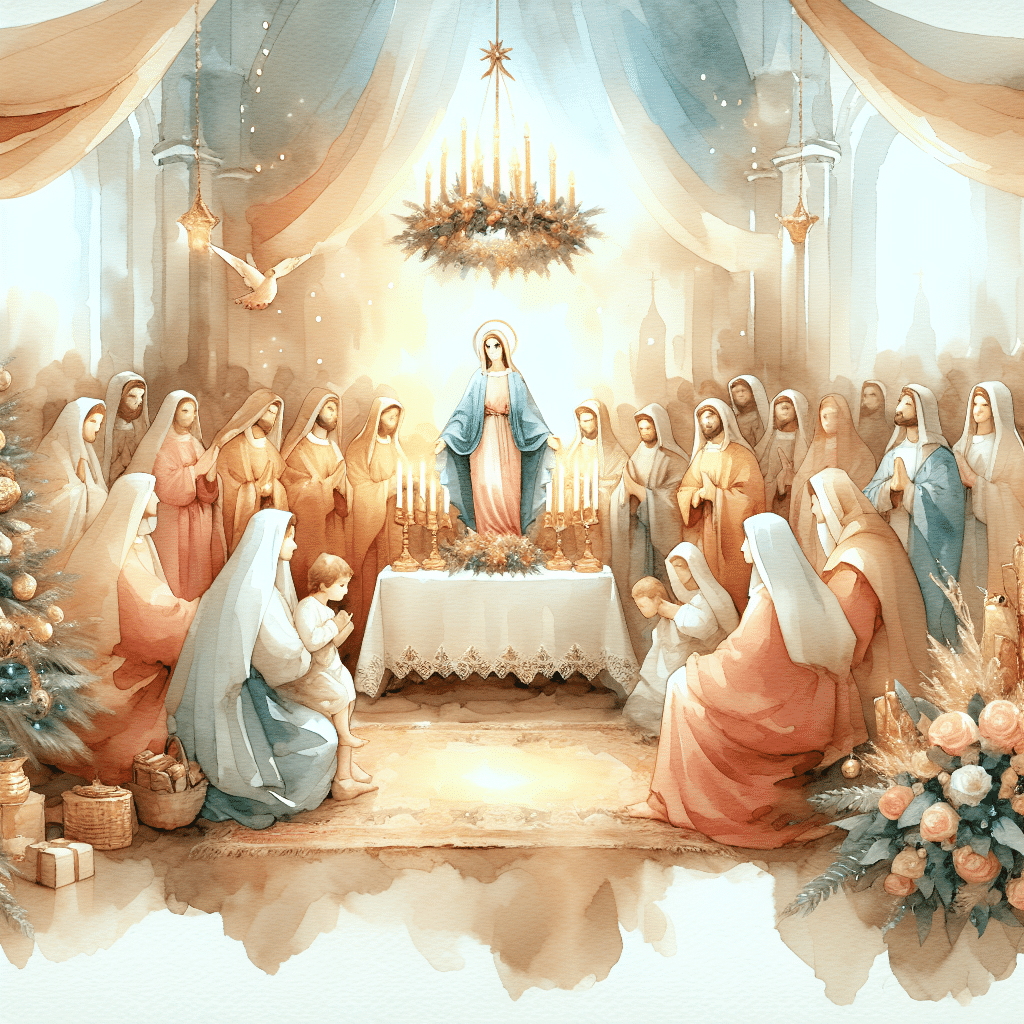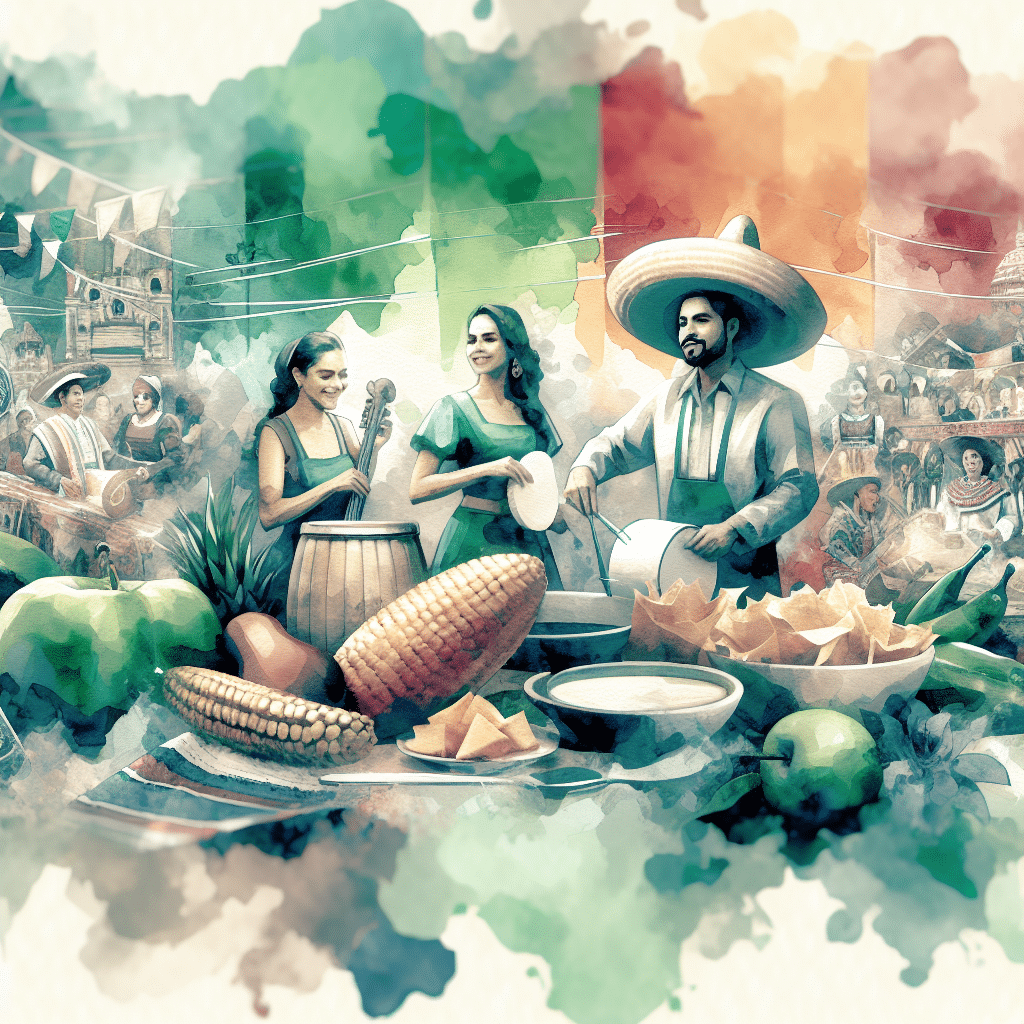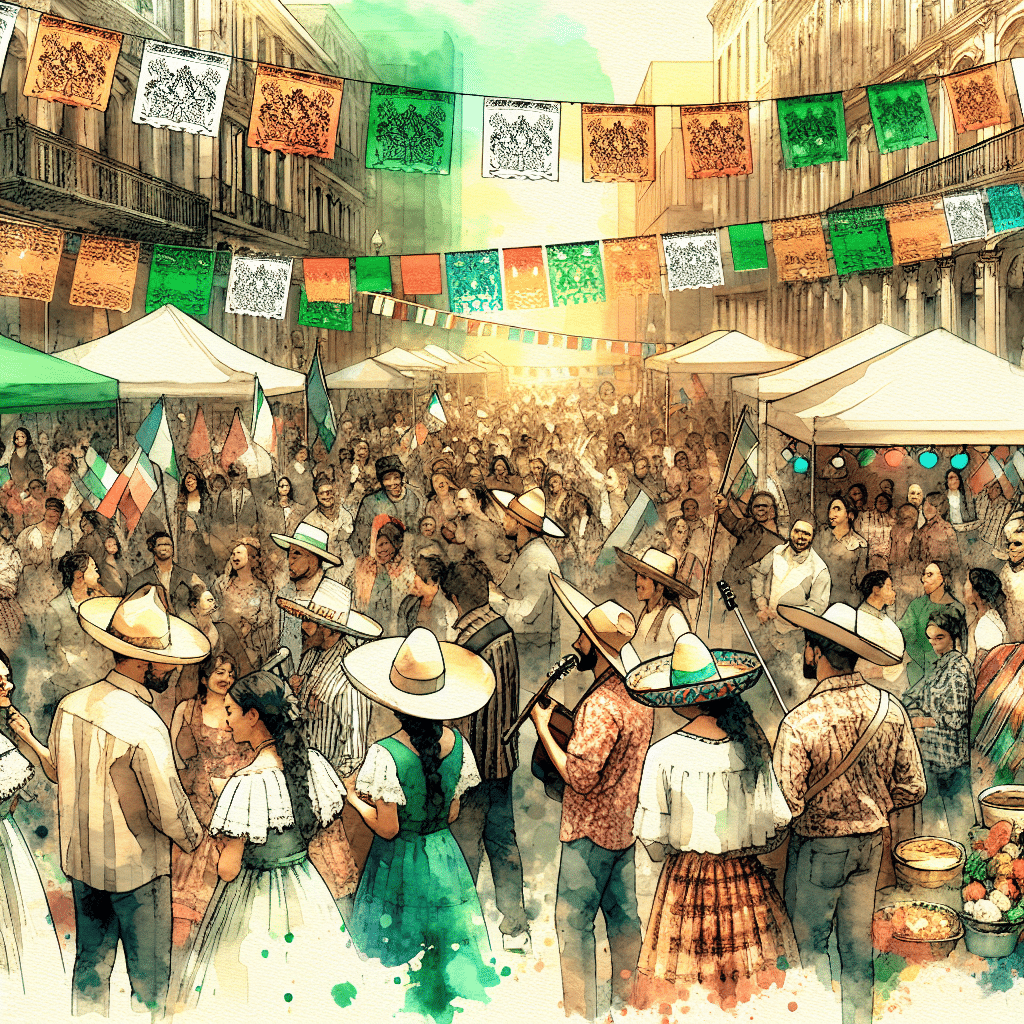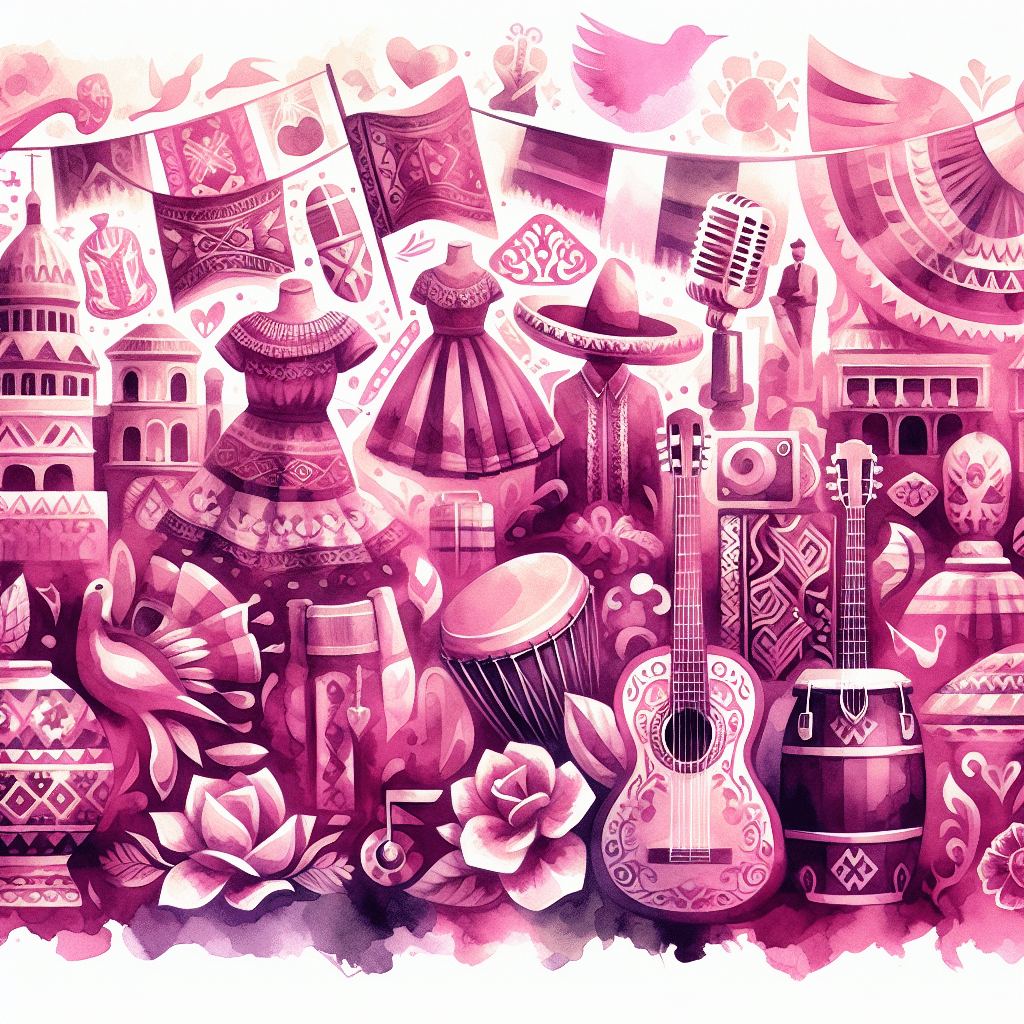
Divine Vibes: Exploring the Epic Virgin Mary Celebrations
The Festivity of the Virgin Mary
Origins and History
The Virgin Mary holds a special place in many cultures and religions, especially within Christianity. Her recognition as the Mother of God dates back to the Council of Ephesus in 431. By the 7th century, January 1st was marked as a celebration of her maternity.
The Feast of the Purification, celebrated by the 5th century, later became the Feast of Simeon in Byzantium. This celebration is rooted in the Gospel of Luke, where Mary was purified according to Jewish customs forty days after Jesus’ birth. The Catholic Church’s veneration of Mary includes various devotions like prayer, art, poetry, and music (Wikipedia).
Evolution of Celebrations
Celebrations honoring the Virgin Mary have evolved over the centuries, with different cultures adding their own unique touches. The Feast of the Assumption is a major celebration, though it’s observed differently among various denominations. For instance, Martin Luther celebrated this feast early in his life but later stopped. For more on this feast, check out our article on Feast of the Assumption.
In 1954, Pope Pius XII declared the Feast of the Queenship of Mary in the papal encyclical Ad Caeli Reginam. The first ceremony for this feast involved crowning the Salus Populi Romani icon of the Virgin Mary in Rome. The Feast of Our Lady of Victory, later renamed Feast of Our Lady of the Rosary, commemorates the 1571 victory of the Papal States against the Ottoman Empire in the Battle of Lepanto.
Modern devotions to Mary have also emerged, such as the May Crowning Ritual and the creation of Mary Gardens worldwide. These celebrations blend traditional reverence with contemporary practices.
For a closer look at the evolution of Marian celebrations and their cultural significance, explore our sections on festivals in Latin America and traditional Latino celebrations.
| Celebration | Origin Year | Notable Features |
|---|---|---|
| Feast of the Purification | 5th Century | Based on Jewish customs |
| Feast of the Assumption | Early Christianity | Varies among denominations |
| Feast of the Queenship of Mary | 1954 | Crowning of Salus Populi Romani icon |
| Feast of Our Lady of Victory | 1571 | Victory at Battle of Lepanto |
The many ways of celebrating the Virgin Mary highlight her lasting influence and cultural importance. Whether through ancient rituals or modern adaptations, these celebrations continue to honor her legacy worldwide.
Marian Feasts and Traditions
Let’s jump into some of the most amazing Virgin Mary celebrations that mix faith, culture, and a whole lot of festive vibes. From the grandeur of the Assumption to the regal Queenship of Mary, and the victorious spirit of Our Lady of Victory, these feasts are a blend of history, tradition, and a dash of divine flair.
Feast of the Assumption
The Feast of the Assumption is like the Met Gala of Marian celebrations. It commemorates the Virgin Mary ascending into heaven, body and soul. This feast is one of the most important holidays in the Catholic tradition, observed on August 15th. While some denominations debate the specifics of her departure (Dormition or Assumption), Catholics go all out to celebrate this celestial event.
Parishes and communities mark this day with processions, Masses, and sometimes even fireworks. It’s not just a religious event; it’s a way to connect with personal ethnic heritage and faith. For more on this grand celebration, check out our article on the Feast of the Assumption.
| Country | Celebration Style |
|---|---|
| Italy | Grand processions, feasts, and fireworks |
| Spain | Religious parades and community gatherings |
| Latin America | Colorful festivals, street parties, and traditional dances |
Queenship of Mary
Next up, we’ve got the Queenship of Mary, declared in 1954 by Pope Pius XII in the papal encyclical Ad Caeli Reginam (Wikipedia). This feast takes place on August 22nd and emphasizes Mary’s role as the Queen of Heaven and Earth. The initial ceremony involved crowning the Salus Populi Romani icon in Rome, a tradition unique to Roman Catholics.
Pope Paul VI called for special prayers for peace during the month of May, particularly on this feast day (National Catholic Register). Imagine a day where the Virgin Mary gets the royal treatment, complete with crowns, processions, and a whole lot of prayer power.
| Activity | Description |
|---|---|
| Crowning Ceremony | Icon of Mary crowned in grand procession |
| Special Prayers | Focus on peace and blessings |
| Community Events | Local parishes host gatherings and services |
Feast of Our Lady of Victory
Lastly, let’s talk about the Feast of Our Lady of Victory, also known as the Feast of Our Lady of the Rosary. This feast dates back to the 1571 victory of the Papal States against the Ottoman Empire at the Battle of Lepanto. Celebrated on October 7th, this day is all about honoring the Virgin Mary for her intercession in securing victory.
While the name and date may have evolved, the essence remains the same. October is traditionally called rosary month in the Catholic Church, making this feast a central celebration. Think of it as a historical epic with a spiritual twist, complete with rosary recitations, Masses, and community festivities.
| Event | Description |
|---|---|
| Battle of Lepanto | Historical victory attributed to Mary’s intercession |
| Rosary Recitations | Central focus during the month of October |
| Community Celebrations | Local parishes host special Masses and events |
For more on these divine festivities, check out our articles on Catholic feast days and latino religious festivals. Whether you’re a devout follower or a cultural enthusiast, these Marian feasts are a blend of history, faith, and celebration that resonate with a dual cultural identity.
So, next time you’re looking to add some divine vibes to your calendar, remember these amazing Virgin Mary celebrations. They are not just religious observances but also vibrant cultural events that reflect a rich heritage and a deep sense of community.
Global Celebrations of Mary
Exploring how the Virgin Mary is celebrated around the world gives us a peek into the colorful and heartfelt ways people show their devotion. From lively parades to quiet prayers, these events show just how much Mary means to different communities.
Parades and Traditions
Parades and traditions are the heartbeat of many Virgin Mary celebrations. Picture this: statues of Mary being carried through the streets, surrounded by music, dancing, and bright decorations. In Sicily, for example, there’s an annual event where a statue of Mary is carried to a flower-covered arch (CLINIC Legal).
Other common traditions include prayer vigils, lighting candles, and offering flowers. These acts of devotion bring people together, creating a sense of unity and shared faith. Curious about how these traditions vary by region? Check out our guide on traditional Latino celebrations.
Feast of the Assumption Worldwide
The Feast of the Assumption, celebrated on August 15th, is a big deal in the Marian calendar. This feast marks the belief that Mary was taken into heaven, body and soul. Different countries have their own ways of celebrating.
In many places, the Feast of the Assumption is a public holiday, giving communities a chance to gather for special Masses, parades, and feasts. In France, for instance, the day is celebrated with grand parades, fireworks, and communal meals. In Spain, the streets buzz with parades and traditional dances. Want to know more about these celebrations? Dive into our article on festivals in Latin America.
| Country | Celebration Style |
|---|---|
| Italy | Parades, flower arches |
| France | Masses, fireworks |
| Spain | Parades, traditional dances |
| Philippines | Grand parades, feasts |
Cultural Importance
Marian celebrations are more than just religious events; they’re a way to keep cultural traditions alive. These celebrations let communities express their identity and values through shared customs.
In many Latino communities, celebrating the Virgin Mary is tied to cultural identity. The lively parades, music, and dances showcase the rich Latino heritage. Similarly, in places like India and Singapore, people from different faiths, including Hindus and Muslims, join in Marian devotions, showing Mary’s universal appeal (National Catholic Reporter).
These celebrations also help build a sense of community and solidarity. By bringing people together, they strengthen social bonds and create a feeling of belonging. For more on the cultural importance of Marian celebrations, check out our articles on Latino religious festivals and Hispanic cultural events.
Whether you’re joining a parade, attending a Mass, or just soaking in the festive vibes, the global celebrations of Mary offer a special chance to connect with a tradition that crosses cultural and religious lines.
Mary’s Influence Beyond Christianity
Mary, the Virgin, isn’t just a big deal in Catholic and Orthodox Christian circles. She’s got a fan base that stretches way beyond Christianity, making her a universal icon of devotion. Let’s see how Mary is revered in Islam, Buddhism, Hinduism, Taoism, and even in South Korea and Singapore.
Mary in Islam and Buddhism
In Islam, Mary, known as Maryam, is a superstar. She’s the only woman mentioned by name in the Quran and is considered one of the most righteous women. Muslims believe in the virgin birth of Jesus, and Mary is highly respected for her piety and dedication.
In South Korea, some Buddhist devotees have a unique take. They see Mary as an emanation of the bodhisattva Guanyin, a feminine deity of compassion. You might even find statues of Mary and Guanyin hanging out together in households, promoting religious harmony.
| Belief System | Role of Mary |
|---|---|
| Islam | Most righteous woman, virgin birth of Jesus |
| Buddhism (South Korea) | Emanation of bodhisattva Guanyin |
Mary in Hinduism and Taoism
In India, Hindu devotees often visit the shrine of Our Lady of Velankanni. They pray to Mary, make vows, and seek her help with health, family, or work issues. This approach is quite similar to how they revere Hindu deities. It’s all about making vows, offering material items, and hoping for some divine intervention.
Mary also finds a spot in Taoism. In the Origin of the Self, a Taoist-based religious movement, Mary is seen as a figure who meditated, gave birth to a higher being, and transcended human mortality. She’s considered a revelation of the spiritual potential of humankind.
| Belief System | Role of Mary |
|---|---|
| Hinduism | Divine intercessor similar to Hindu deities |
| Taoism | Meditated, gave birth to a higher being, spiritual potential |
Mary in South Korea and Singapore
In Singapore, the Virgin Mary is a popular figure among Muslims and Hindus. At a Marian shrine managed by the Redemptorists, it’s common to see devotees from these faiths praying to Mary. Many of them were introduced to Marian devotions while attending Catholic schools. They make vows to Mary, seeking her intercession in their lives.
In South Korea, Mary is sometimes seen in the same light as Guanyin among Buddhist devotees, promoting religious harmony and showing that divine compassion transcends religious boundaries.
| Country | Devotees | Role of Mary |
|---|---|---|
| Singapore | Muslims and Hindus | Divine intercessor, introduced through Catholic schools |
| South Korea | Buddhists | Viewed as Guanyin, promotes religious harmony |
Mary’s influence is truly global, crossing religious and cultural boundaries. Her universal appeal is a testament to her enduring legacy and the divine vibes she continues to spread worldwide. For more on Marian festivities, check out our articles on the feast of the assumption and hispanic cultural events.
May Celebrations and Traditions
May isn’t just about blooming flowers; it’s also a time for honoring the Virgin Mary. For over 300 years, Catholics have dedicated this month to Mary, celebrating her role in the faith and her influence in everyday life.
May Crowning Ritual
One of the most cherished traditions is the May Crowning. This involves placing a wreath of flowers on a statue or image of Mary, symbolizing her as the Queen of Heaven and Mother of God. The event often happens during Mass and includes a procession, prayers, and hymns centered around Mary. The flowers and herbs used for the crown are usually refreshed throughout the month to keep them looking vibrant. This year, May Crowning is on May 24th.
| Event | Description |
|---|---|
| Procession | Participants walk in a procession, often carrying flowers. |
| Crowning | A crown of flowers is placed on a statue or image of Mary. |
| Hymns and Prayers | Special hymns and prayers are recited, honoring Mary. |
| Flower Refresh | The crown is refreshed with new flowers throughout the month. |
May as Mary’s Month
Dedicating May to Mary goes way back to medieval times. May marks the end of winter and the start of new growth, making it a perfect time to honor Mary, often linked with new beginnings and motherhood. This practice started in Italy in 1784 and quickly spread to other parts of Europe like France and Belgium. By the 19th century, May devotions had become the most significant form of Marian devotion (The Boston Pilot).
Pope’s Emphasis on May Devotions
Popes have long stressed the importance of honoring Mary in May. Pope Paul VI, for instance, called for special prayers for peace during this month, especially on the feast of the Queenship of Mary. Popes like Pius XII and John Paul II have also highlighted May as a time to seek Mary’s intercession for blessings and peace (National Catholic Register).
For more insights on Catholic feast days and Latino religious festivals, explore our other articles. If you’re curious about the global impact of these traditions, check out our coverage on the Feast of the Assumption and other festivals in Latin America.
Oshogatsu and Marian Devotions
Oshogatsu Celebration
Oshogatsu, the Japanese New Year, kicks off on January 1st. It’s a time to honor Toshigami-sama, the god of time and fertility. Families gather, businesses shut down, and folks head to shrines (Boston Public Library). The celebrations feature tasty treats like ozoni, a soup with mochi, fish broth, seaweed, miso, and various veggies or meats. The recipe often reflects the family’s roots in Japan.
Oshogatsu in Japan
Before 1873, Oshogatsu followed the lunar calendar. But since Japan switched to the Gregorian calendar, the festivities start on January 1st. In Japan, Oshogatsu usually lasts from three days to a week. Japanese American families often celebrate just on January 1st (Boston Public Library). This focus on family and renewal is similar to traditional Latino celebrations like the feast of the assumption.
Cross-Cultural Veneration
The Virgin Mary is a universal figure, crossing religious lines. In Singapore, it’s common to see Muslim and Hindu devotees at Marian shrines, praying to Mary. Many of them learned about making vows to the Virgin through Catholic schools (National Catholic Reporter). In South Korea, some Buddhists see Mary as an emanation of Guanyin, the bodhisattva of compassion. Statues of both Mary and Guanyin can sometimes be found together in homes as a sign of religious harmony (National Catholic Reporter).
Mary’s influence reaches India too, where Hindu devotees visit the shrine of Our Lady of Velankanni to pray for health, family, or work issues. They approach Mary much like they do Hindu deities, making vows and offering items (National Catholic Reporter).
| Country | Faith | Devotional Practice |
|---|---|---|
| Japan | Shinto | Toshigami-sama worship during Oshogatsu |
| Singapore | Islam, Hinduism | Prayers and vows at Marian shrines |
| South Korea | Buddhism | Mary as an emanation of Guanyin |
| India | Hinduism | Vows and offerings at Our Lady of Velankanni |
This cross-cultural veneration shows how Mary’s influence spans various Latino religious festivals and beyond, making her a figure of universal devotion and reverence.
Check out more about how the Virgin Mary is celebrated globally in our article on festivals in Latin America.
Modern Devotions to Mary
May Garden Devotions
For over 300 years, May has been the month to honor Mary, the mother of Jesus, for her gift to the world. This tradition, rooted in medieval customs, has evolved into a month-long celebration involving various devotions. One popular practice is creating Mary Gardens. These gardens often feature flowers and plants associated with Mary, like marigolds, roses, and ivy.
Mary Gardens offer a peaceful space for prayer and reflection. The first known Mary Garden in the United States was set up at St. Joseph Parish in Woods Hole, Massachusetts, in 1932. This garden inspired the founding of Mary’s Gardens, an organization devoted to promoting Marian devotional gardens (The Boston Pilot). Today, Mary Gardens can be found worldwide, from Ireland to Japan.
| Flower | Symbolism |
|---|---|
| Marigold | Mary’s gold |
| Rose | Queen of flowers |
| Ivy | Eternal life |
Crowning of Mary
One of the most recognized Marian traditions is the crowning of Mary. This involves placing a crown of flowers and herbs on a statue or painting of Mary. The “Order of Crowning an Image of the Blessed Virgin Mary,” published by the Congregation for Divine Worship in 1987, formalized this tradition (The Boston Pilot).
May Crownings are often celebrated during Mass with a procession. Participants sing hymns and recite prayers centered around Mary. The flowers and herbs used in the initial crowning are typically replaced throughout the month to keep them fresh. This ceremony is a beautiful way to celebrate the “Queen of Heaven,” providing an opportunity to encounter Christ through the Virgin Mary.
Mary Gardens Worldwide
Mary Gardens have transcended borders, becoming a global phenomenon. These gardens, dedicated to the Virgin Mary, feature a mix of flowers and plants linked to her life and virtues. The concept of Mary Gardens has grown in popularity over the last century, with notable examples found in places like the Basilica of the National Shrine of the Immaculate Conception in Washington, D.C. (The Boston Pilot).
Mary Gardens provide a peaceful retreat for prayer and reflection, whether they are located in a parish, a public park, or a private home. The combination of floral symbolism and Marian imagery creates a unique space for devotional practices. If you’re interested in creating your own Mary Garden, consider planting flowers such as marigolds, roses, and ivy, and include a statue or shrine as a focal point.
For more insights on Latino heritage festivals and traditional Latino celebrations, explore our related articles. Embrace the beauty and serenity of Mary Gardens as a way to deepen your connection with the Virgin Mary and celebrate her enduring influence.
| Location | Notable Mary Gardens |
|---|---|
| USA | Basilica of the National Shrine of the Immaculate Conception |
| Ireland | Knock Shrine |
| Japan | Our Lady of Akita |
For more on Marian devotions, check out our articles on the Feast of the Assumption and Latino religious festivals.
Mary’s Influence in the US
Mary Gardens in the US
In the United States, Mary Gardens have become a peaceful symbol of devotion and reflection. The first known Mary Garden popped up at St. Joseph Parish in Woods Hole, Massachusetts, back in 1932. This garden was the brainchild of John S. Stokes Jr., who later, in 1951, started Mary’s Gardens, an organization dedicated to promoting these special gardens (The Boston Pilot).
A Mary Garden usually features flowers and plants tied to the Virgin Mary, like marigolds, roses, and ivy. These gardens often have a statue or shrine of Mary, creating a calm spot for prayer and contemplation. Since May is a prime month for gardening, it’s no surprise these gardens have become more popular over the years.
| Flower | Symbolism |
|---|---|
| Marigold | Mary’s gold |
| Rose | Queen of Heaven |
| Ivy | Eternal life |
For more on the cultural significance of Marian celebrations, check out our article on the feast of the assumption.
Mary’s Gardens Organization
Mary’s Gardens, founded by John S. Stokes Jr. in 1951, has been key in spreading the idea of Marian gardens. This organization focuses on researching and promoting the tradition of planting gardens dedicated to the Virgin Mary. These gardens can be found worldwide, including places like Ireland, Japan, and the Basilica of the National Shrine of the Immaculate Conception in Washington (The Boston Pilot).
The organization provides resources and guidelines for creating these gardens, ensuring that the tradition continues to thrive. They also offer information on the historical and spiritual significance of the flowers and plants used in Mary Gardens. For more details on the rituals and ceremonies associated with Marian devotions, visit our page on catholic feast days.
Popularity of Marian Gardens
Mary Gardens have become a beloved part of many communities across the United States. These gardens are not just places of prayer but also a testament to the lasting influence of the Virgin Mary in modern spiritual life. With May being Mary’s month, the tradition of creating and maintaining these gardens has become a cherished practice.
The idea of Marian gardens fits perfectly with Latino heritage, where the Virgin Mary holds a special place in cultural and religious traditions. The vibrant flowers and peaceful ambiance of these gardens provide a perfect setting for Latino religious festivals and devotions.
For those looking to create their own Mary Garden, the mix of flowers, a statue, and thoughtful placement can turn any space into a sanctuary. To explore more about the historical and cultural aspects of Marian devotions, check out our page on Latino heritage festivals.
Mary Gardens continue to inspire and provide a place of solace, making them a cherished addition to many homes and communities. Whether you’re looking to deepen your spiritual practice or simply enjoy the beauty of a well-tended garden, a Mary Garden offers a meaningful way to honor the Virgin Mary.




